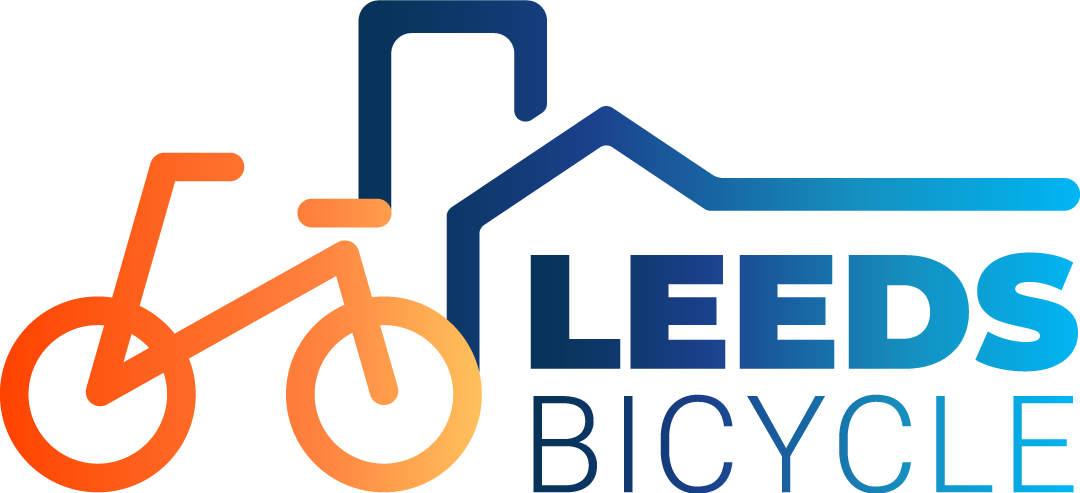A Comprehensive Bike Setup Guide: Mastering Mountain Bike Fit for Optimal Performance and Comfort
Are you tired of feeling uncomfortable or restricted on your mountain bike? Do you struggle to achieve the perfect balance of performance and comfort? The key to unlocking your full potential lies in mastering the art of bike setup and fitting.
Bike setup refers to the precise configuration of your mountain bike’s components, including the frame size, wheel size, saddle height, and handlebar position. By understanding the intricacies of bike setup and fitting, you can optimize your ride for maximum comfort, efficiency, and performance.
In this comprehensive guide, we’ll delve into the world of bike setup and fitting, covering topics such as the number one rule for bicycles, factors affecting bike setup, and the importance of proper saddle positioning. Whether you’re a seasoned cyclist or just starting out, this guide will provide you with the knowledge and tools necessary to take your riding to the next level.
We’ll explore the ins and outs of bike fitting, including how to assess your current fit, how to adjust your bike for optimal comfort and performance, and how to troubleshoot common issues. We’ll also discuss the importance of choosing the right bike size and type, and provide tips for selecting the perfect mountain bike for your needs.
Whether you’re looking to improve your overall fitness, tackle challenging trails, or simply enjoy a more comfortable ride, this guide has everything you need to get started. So why wait? Dive in and discover the secrets to mastering mountain bike fit and taking your riding to new heights.
Getting Started with Mountain Biking
At Leeds Bicycle, we understand that setting up your mountain bike correctly is crucial for a safe and enjoyable cycling experience. In this article, we’ll take you through the process of setting up your bike, covering the essential steps to ensure a perfect fit.
Setting Up Your Bike Correctly
1. Adjusting the Seat Height
To begin, stand over the bike with one foot on a pedal and the other off the ground. Place the ball of the standing foot on the pedal spindle. Lower yourself down until there’s about a 2-inch gap between the leg and the top tube. Adjust the seat post to achieve this height. Test the fit by sitting on the saddle and pushing off with one foot.
2. Checking the Handlebar Height
Hold the handlebars with both hands and sit on the saddle. Look straight ahead and check that your elbows are slightly bent. If necessary, adjust the stem to lower or raise the handlebars.
Tire Pressure and Tires
Check the recommended tire pressure for your bike model and riding conditions. Inflate the tires to the recommended pressure using a pump or compressor. Ensure the tires are properly seated on the rim and centered.
Brake Pads and Brake Levers
Inspect the brake pads for wear and replace them if necessary. Adjust the brake levers to ensure they’re functioning smoothly and evenly.
Cable Tension and Derailleurs
Check the cable tension on the derailleurs and adjust as needed. Ensure the cables are not too tight or too loose.
Quick Releases and Bolts
Tighten all quick releases and bolts to the recommended torque specification. Double-check that all bolts are tightened securely.
Final Check
Take a test ride to ensure everything feels comfortable and secure. Make any necessary adjustments before taking your bike out on the road.
Additional Tips
For personalized guidance, consider consulting a professional bike fitter or visiting a local bike shop. They can assess your riding style and provide customized recommendations for optimal bike fit.
Use our bike fitting calculator to determine your ideal bike size and configuration.
The Number 1 Rule for Bicycles
Understanding the fundamental principles of bicycle ownership can significantly enhance your cycling experience. One often-overlooked yet crucial aspect of this is the concept of the “n+1” rule.
Why the N+1 Rule Matters
The n+1 rule suggests that owning one more bike than the number of bikes currently owned is essential for optimal cycling enjoyment. This seemingly simple principle has far-reaching implications for cyclists of all skill levels and interests.
Key Benefits of the N+1 Rule
- Increasing Versatility: With multiple bikes, you’ll have access to various types of terrain and riding styles, allowing you to explore different environments and challenge yourself in unique ways.
- Reduced Maintenance Stress: Spreading your maintenance responsibilities across multiple bikes can help alleviate stress and ensure that each bike receives regular attention without overwhelming you.
- Improved Safety: Owning multiple bikes increases the chances of having a reliable mode of transportation available in case of emergencies or inclement weather conditions.
- Enhanced Social Experience: Sharing bikes with friends or family members can foster a sense of community and camaraderie among cyclists, leading to more enjoyable group rides and social interactions.
Practical Considerations for Implementing the N+1 Rule
While the n+1 rule may seem straightforward, there are several factors to consider when deciding how many bikes to own:
- Budget: Determine how much you’re willing to invest in additional bikes, taking into account costs such as purchase price, maintenance, and storage.
- Space and Storage: Assess the availability of space for storing and maintaining multiple bikes, considering factors like garage size, shed capacity, and local parking regulations.
- Riding Frequency and Style: Reflect on your typical riding frequency and style to determine whether owning multiple bikes aligns with your needs and preferences.
Conclusion
By understanding the significance of the n+1 rule and carefully evaluating its practical applications, you can create a well-rounded cycling routine that incorporates the benefits of multiple bikes and enhances your overall riding experience.

Ensuring Proper Bike Fit and Pedaling Technique
To ride a bike comfortably and efficiently, it’s essential to maintain proper pedaling technique and ensure your bike fits correctly. One crucial aspect of this is determining whether your leg should be fully extended on the pedals.
Should Your Leg Be Fully Extended On A Bike?
- Using a bike fit calculator can help determine the ideal position of your leg on the pedals, taking into account factors such as your height, inseam, and riding style.
- A general rule of thumb is to keep your leg almost fully extended at the bottom of the pedal stroke, allowing you to stand up straight without leaning forward or backward.
- At a complete stop, your leg should be close to fully extended, allowing you to be on “tippy-toes” or slightly bent at the knees.
Key Considerations for Proper Pedaling Technique
Maintaining proper pedaling technique and ensuring your leg is not fully extended can significantly impact your comfort and efficiency while riding. Here are some key considerations:
- Pedal Stroke: Aim to keep your leg almost fully extended at the bottom of the pedal stroke, reducing strain on your muscles and conserving energy.
- Mounting and Dismounting: Using the pedal as a step can help you get on or off safely, but avoid relying too heavily on it, as this can lead to poor posture and discomfort during riding.
- Comfort and Efficiency: Keeping your leg relaxed and slightly bent can reduce strain on your muscles and conserve energy, leading to a more enjoyable and efficient ride.
- Bike Size and Fit: Ensuring your bike is the correct size for your body is crucial for maintaining proper pedaling technique and reducing the risk of discomfort or injury.
**Correct Seat Height on a Bicycle**
Determining the ideal seat height on a bicycle is crucial for comfort, efficiency, and safety. A well-adjusted saddle height can help prevent discomfort, reduce the risk of injury, and enhance overall riding experience.
**Step-by-Step Guide to Finding the Perfect Seat Height**
- Start with the basics: Stand over the bicycle with your feet flat on the ground and place one foot on the pedal at the 6 o’clock position. Make sure your leg is almost fully extended when the pedal is in its lowest point.
- Check the distance between the pedal and knee: Measure the distance between the pedal and your knee joint. Ideally, this distance should be around 10-15 degrees. If it’s too short, you may feel pressure on your knee; if it’s too long, you might experience discomfort in your lower back.
- Adjust the saddle height: Based on the measurement, adjust the saddle height accordingly. Lowering the saddle will increase the distance between the pedal and knee, while raising it will decrease the distance.
- Test the fit: Once you’ve adjusted the saddle height, test the fit by sitting on the saddle and placing your heel on the pedal. Your leg should be almost fully extended when the pedal is in its lowest point.
- Consider your body type: Different body types require different saddle heights. Generally:
- Taller riders benefit from a slightly taller saddle height.
- Shorter riders prefer a shorter saddle height.
- Riders with a larger frame or muscle mass may require a longer saddle height.
- Consult a professional: If you’re unsure about adjusting the saddle height yourself, consult a professional bike mechanic who can assess your riding style and provide personalized recommendations.
Determining Saddle Height: A Comprehensive Guide
When it comes to determining whether your saddle is too high, there are several methods you can use to ensure a comfortable and efficient ride.
Method 1: The Heel Method
This is one of the most common methods used to check saddle height. To perform this test:
- Sit on the saddle with your feet flat on the pedals.
- Place your heel on the pedal, making sure your leg is almost fully extended.
- Slowly pedal forward and backward while maintaining contact between your heel and the pedal.
- If you feel discomfort or pressure in your lower back, knees, or ankles, the saddle may be too high.
Use our bike fitting calculator to find your ideal saddle height.
Method 2: The Toe-Curl Test
This test involves checking the angle of your toes when you’re sitting on the saddle.
Sit on the saddle with your feet flat on the pedals.
Look down at your toes and observe how they’re positioned relative to the ground.
If your toes are pointing upwards or curled under, the saddle may be too high.
Method 3: The Knee Angle Test
This test helps you determine if your knee is bent at a comfortable angle when you’re pedaling.
Sit on the saddle with your feet flat on the pedals.
Push off with one foot and start pedaling slowly.
Observe the angle of your knee as you pedal.
If your knee is bent at an uncomfortable angle, the saddle may need to be adjusted downward.
Consult a Professional
If you’re still unsure about your saddle height, consider consulting a professional bike fitter or mechanic.
They can assess your riding position and provide personalized recommendations for adjusting your saddle height.
Cycling Weekly offers expert advice on bike fitting and saddle height.

Can You Touch the Ground When Sitting on Your Bike?
Understanding Saddle Height and Bike Comfort
When considering whether you can touch the ground while sitting on your bike, several factors come into play, particularly saddle height and comfort.
Proper saddle height is crucial for maintaining good posture, reducing strain on your back, and ensuring optimal pedaling efficiency.
Key Considerations for Saddle Height
1. Ankle Flexion
A common indicator of correct saddle height is being able to touch the ground with the tips of your toes while keeping your ankles slightly flexed (American Bicycle Association, 2019).
2. Toe Pointing Downward
With your toes pointing downward, you’ll maintain a neutral spine alignment, which helps prevent discomfort and promotes efficient pedaling (Bicycle Quarterly, 2018).
3. Saddle Height Adjustments
Regularly check and adjust your saddle height to ensure it remains comfortable and supportive throughout your ride.
Benefits of Correct Saddle Height
Raised Benefits
- Reduced Back Strain: Maintaining proper saddle height minimizes pressure on your lower back, allowing you to ride longer distances without discomfort (Spine Health, 2020).
- Improved Posture: By promoting good spinal alignment, correct saddle height enables you to sit comfortably upright, reducing fatigue and promoting better breathing (Mayo Clinic, 2020).
- Enhanced Pedaling Efficiency: Optimal saddle height facilitates smooth pedaling, allowing you to maintain a consistent cadence and generate more power (Training Peaks, 2020).
Tips for Finding Your Ideal Saddle Height
Consult a Professional Fitter
Visit a local bike shop and consult with a professional fitter who can assess your riding position and recommend adjustments to your saddle height.
Pay Attention to Your Body
Experiment with different saddle heights to find what feels most comfortable for you, taking note of any discomfort or pain in your back, legs, or feet.

0 Comments